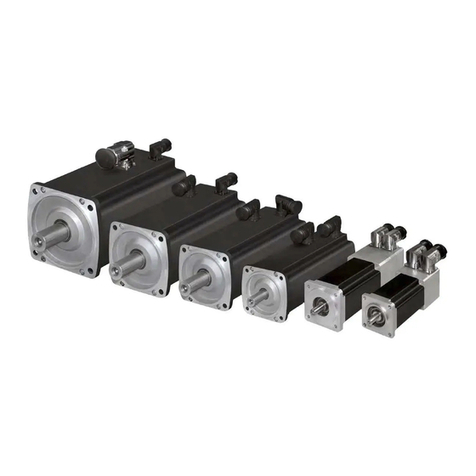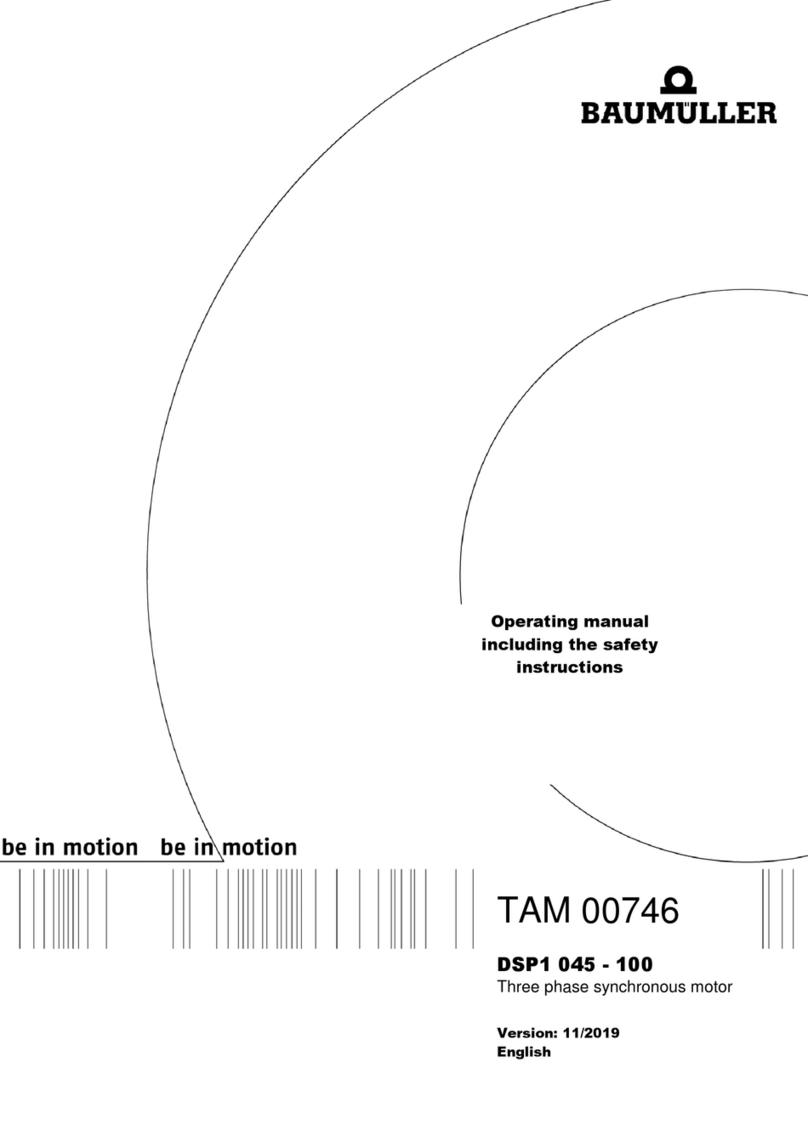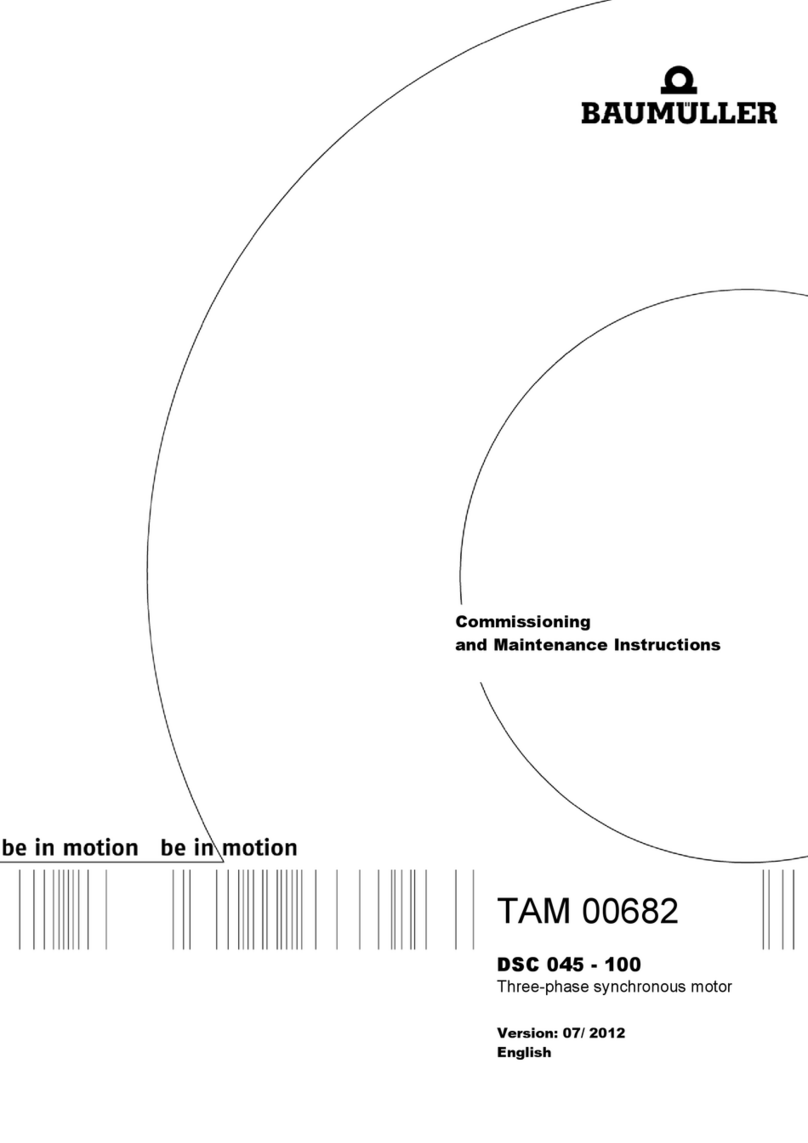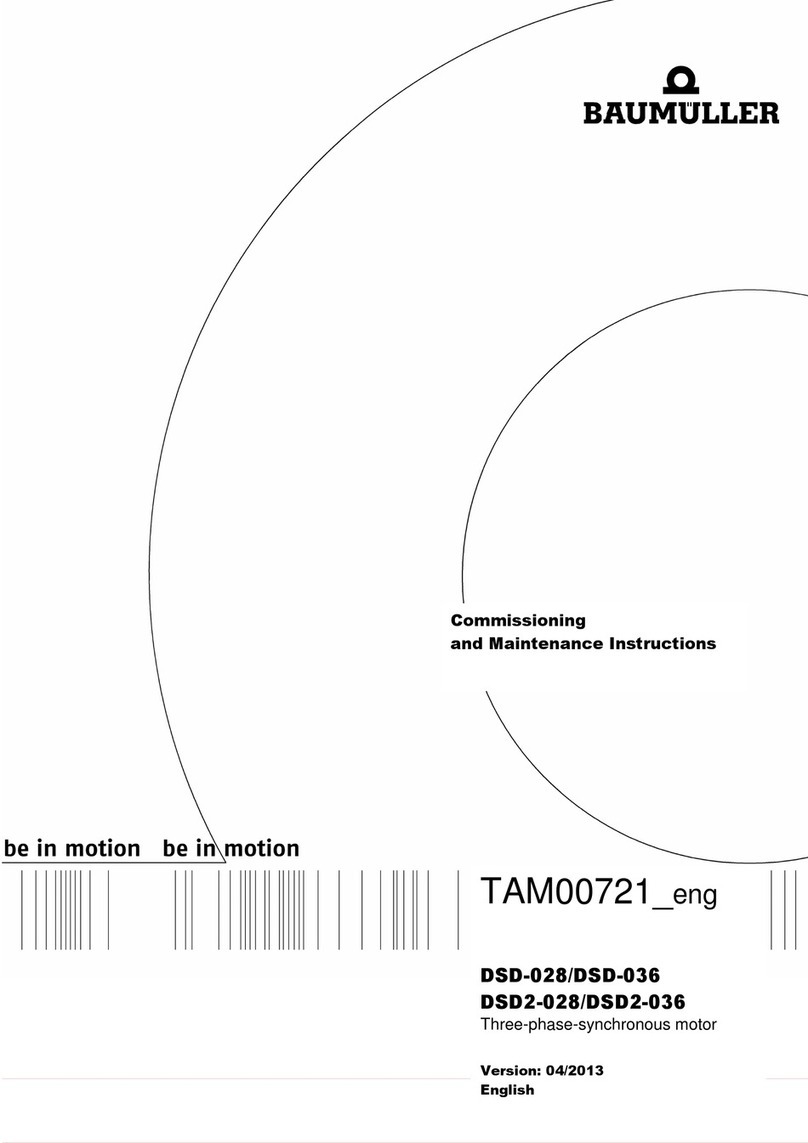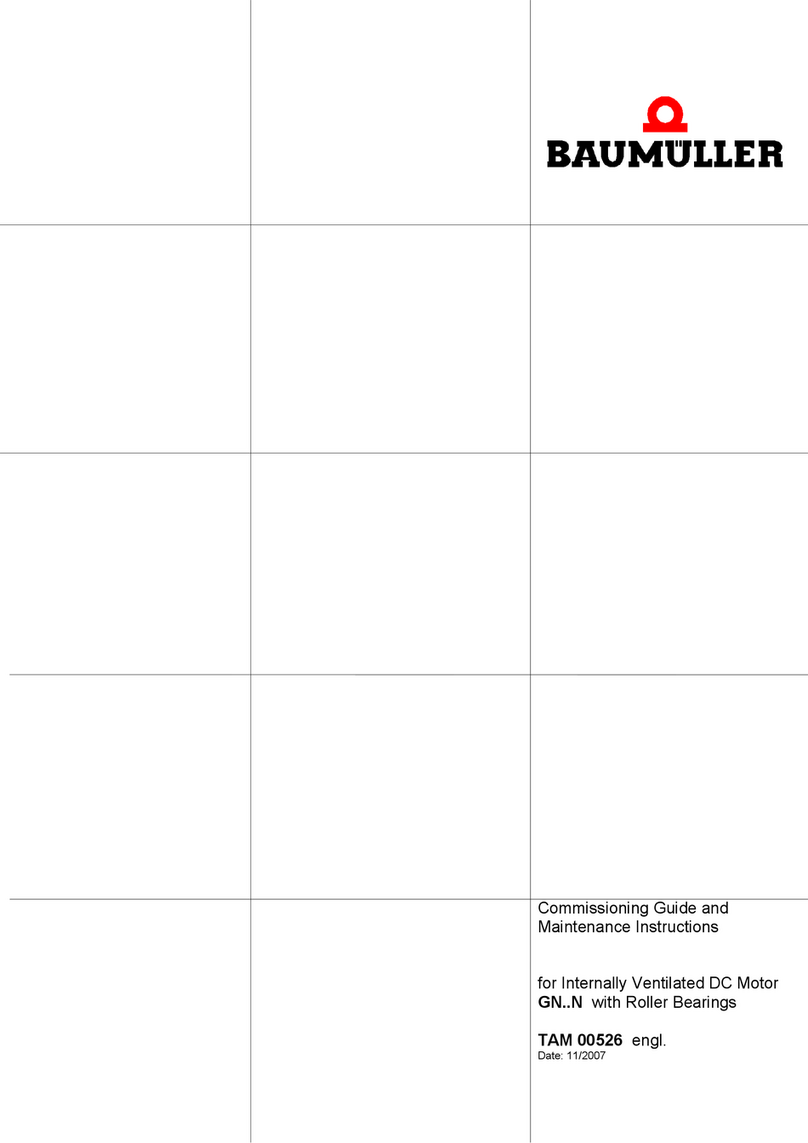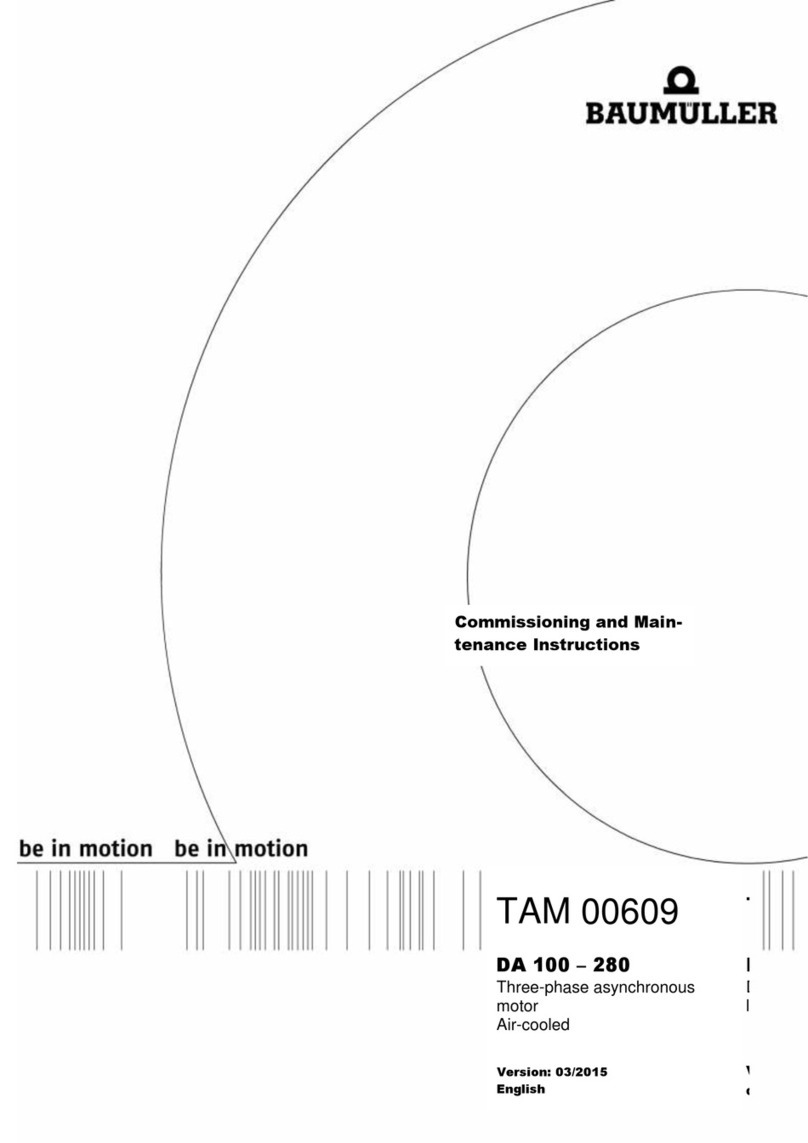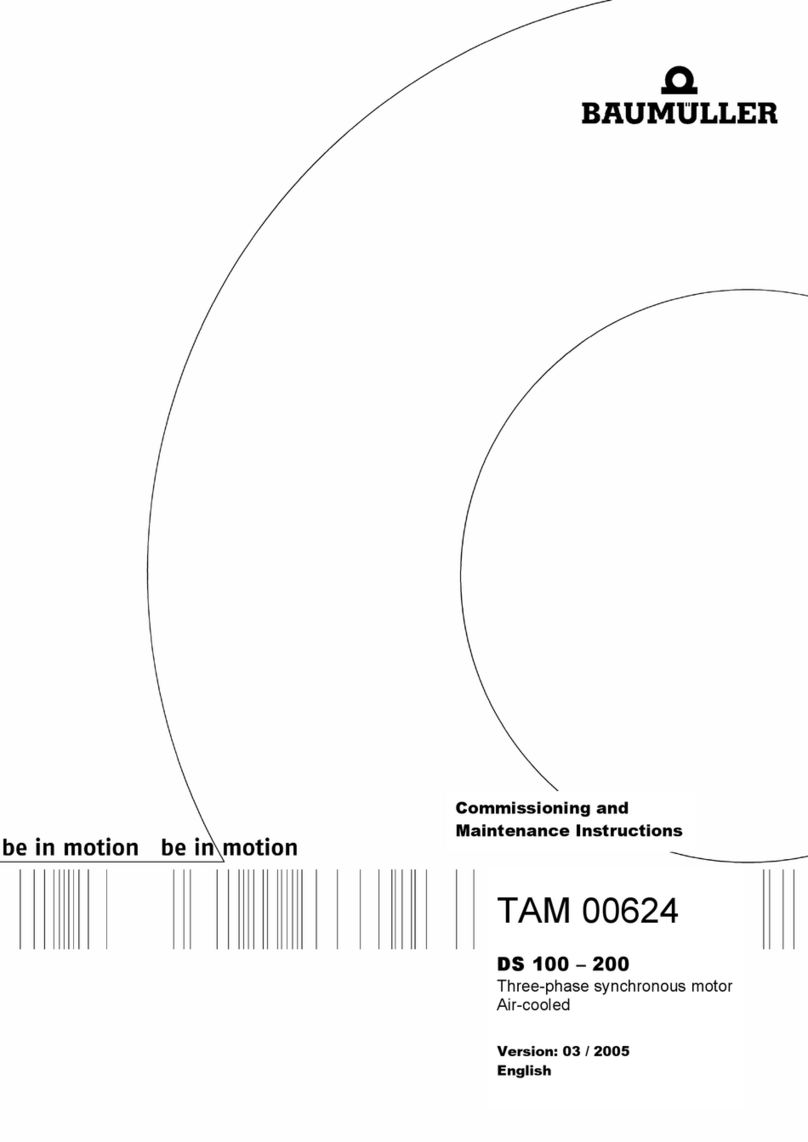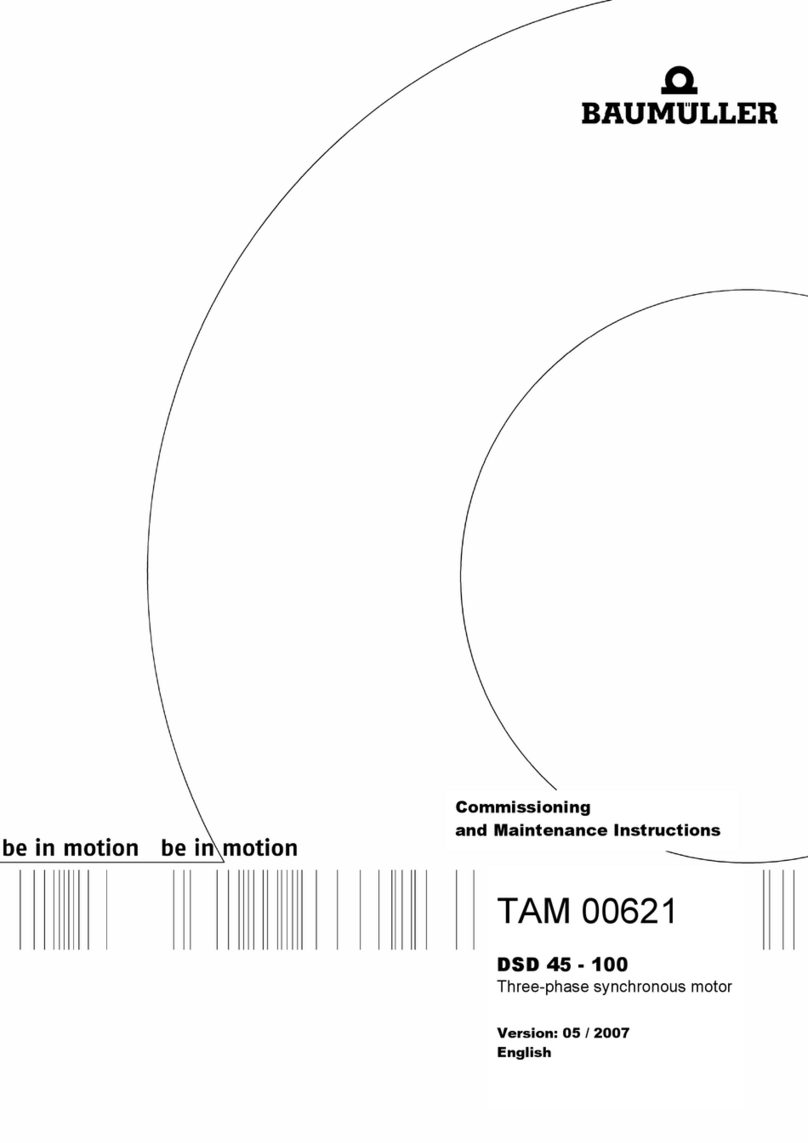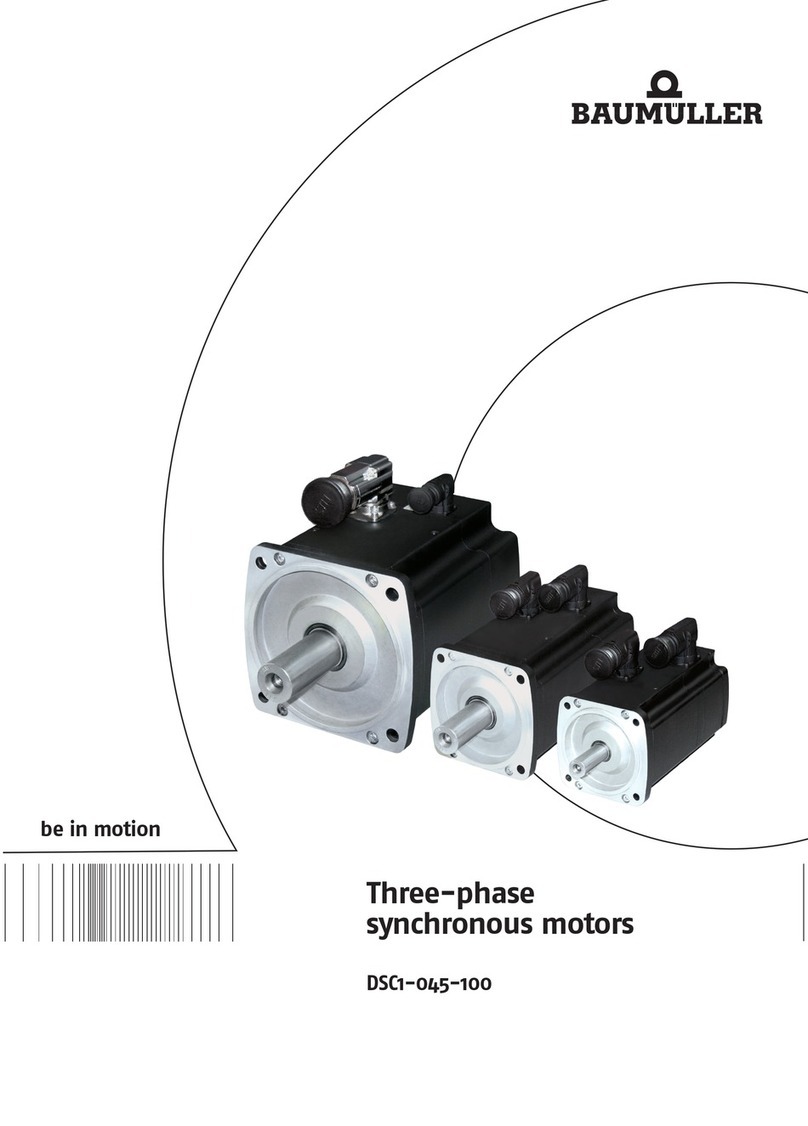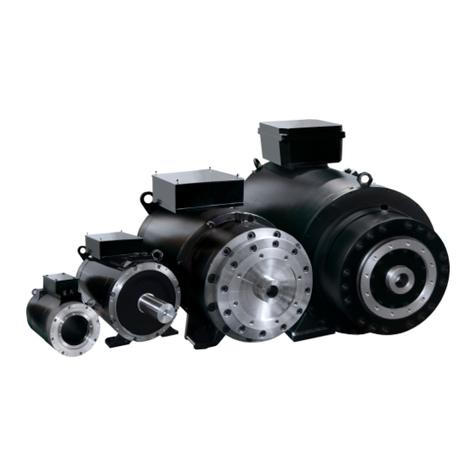
TAM00720 5
DSM1 10/2015
Three-phase-synchronous motor English
1.2 Intended use
The use of an electric motor is permitted within its intended use, only. In this connection the electric
motor must exclusively be used by considering all specified cases of application within the technical
data of this commissioning- and maintenance guide.
All works referring to mounting, commissioning, maintenance as well as during operation must be car-
ried out by qualified personnel, only.
Within the scope of the mentioned safety instructions, the term „qualified personnel“ is to be under-
stood a person, who was skilled and authorized to a special subject area. This person is authorized to
install, mount, commission and operate devices, systems and current cirucuits by complying with the
valid safety standards (EN 50110-1).
Improper handling can cause severe personal injuries and property damages.
This electric motor is intended for the use within industrial systems and is subject to the following
standards and guidelines:
Standards
EN 60034-1, EN 60034-5, EN 60034-6, EN 60034-7, EN 60034-9, EN 60034-11, EN 60034-14 EN
60204-1
EU Low-Voltage Directive (LVD)
Electric motors of this series meet the requirements of the low-voltage directive (conformity).
EU Machinery Directive
Electric motors are components, which are to be built into machines complying with the Machinery
Directive. The conformity of the final product with this directive must be approved prior to being
commissioned (consider EN 60204-1 “Electrical equipment of machines”).
EU EMC Directive
The operation of the electric motor must meet the protection requirements of the EMC Directive
2004/108/EG. The proper installation (e.g. physical separation of signal lines and power cables,
shielded lines and cables and so on) is within the responsibility of the installation contractor and the
system provider. During the operation with the power inverter, the EMC notes of the manufacturer
of the power inverter, the encoder and the brakes must be considered, also.
Furthermore, consider the binding national, local and system-specific specifications!
The electric motor is designed for the following environmental conditions:
• Environmental temperature: 0 °C bis +40 °C
• Installation altitude: ≤1000 m above sea level
• Relative air humidity: 5 % to 85%
Pay attention to differing data on the rating plate as well as to the data of the technical documents.
The conditions at the operating site must comply with all information on the rating plate.
The use within hazardous areas is prohibited provided that it was designed for this
purpose (consider additional information). Furthermore, neither flammable gas mixtures
nor dangerous dust concentrations may exist within the environment of the electric mo-
tor Motor parts under tension and parts, which are hot could catch fire and cause severe
injuries and property damages.
If higher requirements are demanded in special cases as e.g. in use within non-
industrial systems, these requirements must be ensured during installation (e.g. touch
protection against children’s fingers).
Motor version with rare-earth magnets:
